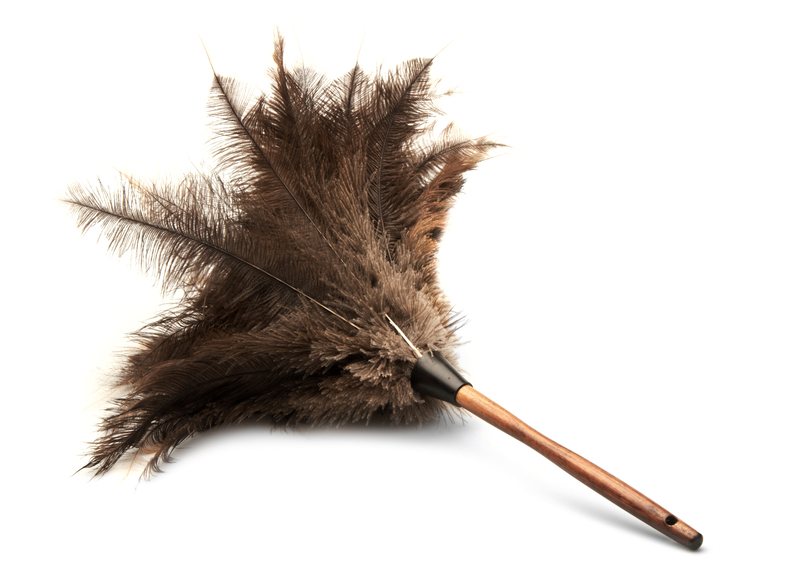Erase Damp Smells with This Handy Guide
Posted on 11/09/2025
Erase Damp Smells with This Handy Guide
Persistent damp smells in your home can be stubborn and embarrassing, often hinting at deeper moisture problems lurking unseen. Whether you're faced with musty odors after a long winter, following a flood, or simply in areas like basements or bathrooms, erasing damp odors is crucial not only for comfort but also for health. This comprehensive guide offers you a step-by-step plan to eliminate damp smells for good, tackle root causes, prevent their return, and ensure your living spaces always feel (and smell!) fresh.
Understanding the Science Behind Damp Odors
Before embarking on eradicating musty aromas, it's vital to comprehend what causes them. Damp smells are primarily the result of mold and mildew growth. These fungi thrive wherever there is excess moisture, limited airflow, and organic material--like wood, carpet, or wallpaper. They produce microbial volatile organic compounds (MVOCs), which evaporate into the air and create that recognizable stale, earthy scent.
- Mold can grow within 24-48 hours of excess moisture.
- Mildew usually appears on surfaces and is easier to spot, whereas mold infiltrates deeper materials.
- Long-term exposure to damp environments can also affect indoor air quality and potentially trigger allergies, asthma, or other respiratory issues.
The sooner you address the cause and the smell, the better for your home's health and yours.

Step 1: Locate the Source of Damp Smells
Successful damp odor removal starts with thorough inspection. It's not enough to mask the smell--the root source must be tackled to prevent recurrence. Here's how to proceed:
Inspect Problem Areas
- Check basements, attics, crawl spaces, and bathrooms--common hot spots for moisture build-up.
- Examine walls, ceilings, and floors for water stains, bubbled paint, or peeling wallpaper.
- Review furniture, carpets, and fabrics--smells can penetrate and linger in these materials.
- Open closets and cupboards, especially in less frequently-used rooms.
- Look for signs of leaks or recent water damage around windows and pipes.
Pinpoint Hidden Moisture
- Use a moisture meter for accurate assessment in walls and floors.
- Consider thermal imaging cameras for locating damp spots not visible to the naked eye.
- Check ventilation in laundry rooms and areas near appliances like dishwashers and washing machines.
Step 2: Remove Excess Moisture
Without moisture, musty smells cannot thrive. The next logical step is to dry out the affected areas promptly.
Ventilate Your Spaces
- Open windows and doors for cross-ventilation.
- Set up fans (ceiling fans, standing fans) to improve air movement.
- Turn on exhaust fans in bathrooms and kitchens during and after use.
Deploy Dehumidifiers
- Aim for an indoor humidity target of 30-50%.
- Use a dehumidifier in damp-prone zones--basements, laundry areas, or closets.
- If you don't have a dehumidifier, silica gel packs or moisture-absorbing products can help in confined spaces.
Fix Water Leaks & Sources
- Seal cracks in foundation walls and floors.
- Repair leaking pipes, faucets, or fixtures immediately.
- Improve outdoor drainage--ensure gutters point away from your home's foundation.
Step 3: Clean and Deodorize Thoroughly
Once the area is dry, it's time to erase damp odors at their source. Relying on air fresheners or masking agents is not enough; deep cleaning with effective products is key.
Use Natural Deodorizers
- Baking soda: Sprinkle liberally on carpets, rugs, or upholstery--let it sit overnight and vacuum in the morning.
- Vinegar: Place bowls of white vinegar around problem spots to absorb and neutralize smells.
- Activated charcoal: Highly porous, it soaks up and removes musty odors from the air.
Scrub Surfaces
- Mix equal parts vinegar and water to wipe down walls and hard surfaces.
- Wash fabrics with enzyme-based detergents that tackle mildew at a molecular level.
- Steam clean carpets or hire a professional for deep cleaning if mustiness persists.
Dispose of Unsalvageable Items
- Heavily infested or water-damaged materials (e.g., certain carpets or drywall) may need to be replaced entirely.
- Don't ignore clutter--it restricts airflow and harbors mildew growth.
Step 4: Treat and Prevent Mold Regrowth
Erasing odors is only part of the solution. Mold spores are resilient and can quickly regrow in the right conditions. Here's how to ensure lasting elimination of damp smells:
Apply Mold Inhibitors
- Go for specialized mold-killing sprays (with ingredients like hydrogen peroxide or tea tree oil).
- After cleaning, apply an anti-mildew paint on walls in high-risk rooms (bathrooms, laundry, kitchens).
Enhance Ventilation & Sunlight
- Install ventilation systems or air purifiers with HEPA filters.
- Keep window coverings open to let in sunlight, which naturally inhibits mold.
Maintain Regular Cleaning Routines
- Aim for a weekly wipe-down of surfaces susceptible to moisture.
- Don't overlook soft furnishings--wash or air out curtains, cushions, and linens frequently.
- Maintain ceiling and exhaust fans; check attic and crawlspace vents annually.
Natural and Commercial Solutions to Wipe Out Damp Odors
When fighting persistent odors, a combination of natural and store-bought products works best. Here are winning options:
Eco-Friendly Solutions
- Lemon Juice: Natural and antibacterial; add to cleaning water for a fresh scent.
- Essential Oils: Use tea tree, lavender, or eucalyptus oil for both fragrance and mold-fighting power.
Effective Store-Bought Products
- Odor absorbers: Look for containers or pouches designed specifically to eliminate musty smells, not just mask them.
- Mildew removers and sprays: Ideal for bathrooms, kitchens, and tiled surfaces.
- Air purifiers: Units with activated carbon filters or UV light further eradicate both odors and spores from indoor air.
Prevention Tips to Erase Damp Smells Permanently
"Prevention is better than cure" rings true for household odors. After you've eliminated current problems, follow these strategies to ensure musty smells never return:
- Ventilate the entire home daily--even just 10 minutes of fresh air makes a difference.
- Keep indoor humidity in check year-round; monitor with a hygrometer.
- Insulate pipes to prevent condensation.
- Store clothes and linens in airtight containers during damp weather seasons.
- Declutter regularly--empty corners and stacked items stop air movement and can hide moisture.
- Arrange furniture away from walls if possible to allow airflow.
- Have regular plumbing and roof inspections, especially after storms or harsh weather.
When to Call the Professionals
Sometimes, DIY methods don't suffice, especially in cases of persistent or widespread damp issues. Consider expert help if:
- The musty odor returns quickly after cleaning--this may suggest hidden mold within walls or flooring.
- There's over 10 square feet of visible mold.
- You or family members experience ongoing health symptoms such as coughing, headaches, or asthma flare-ups.
- There's major water damage (from flooding or leaks) in structural elements like beams or drywall.
A professional mold remediation team uses advanced equipment to detect, remove, and prevent complex or hazardous contamination.

Frequently Asked Questions About Removing Musty Odors
Why do musty smells return after cleaning?
Typically, this means the root cause--often moisture or hidden mold--remains. You may need a more thorough inspection or professional intervention.
Are damp smells harmful to health?
Prolonged exposure can affect respiratory health, aggravate allergies, and worsen asthma. Immediate action is advisable to protect vulnerable family members.
Can scented candles or air fresheners help?
While they may cover the smell temporarily, they do not remove the source and can even compound issues by adding chemical scents to poor air.
Will a dehumidifier alone erase musty odors?
It helps reduce ambient moisture but should be combined with cleaning, deodorizing, and addressing the underlying moisture source.
Conclusion: Enjoy a Fresh, Odor-Free Home
Erasing damp smells isn't just about comfort--it protects your investment and nurtures a healthier environment. By following this handy guide--from identifying sources, drying out, cleaning, and deodorizing to ongoing prevention--you're well-equipped to eliminate musty odors and keep your spaces feeling revitalized. Don't let persistent damp smells take over. Act today, breathe easy, and enjoy a home that's as inviting to your nose as it is to your eyes!




